On July 7th, 1984, three teenagers in Bangor, Maine, killed Charlie Howard for being gay.
The crime shocked many in Bangor, including Stephen King, the town's most famous resident. King moved his family to Bangor in 1980 to write his horror novel It. Later, he recognized the horror of the murder of Charlie Howard and memorialized it in the second chapter of It. The trio of killers—Jim Baines (15), Shawn Mabry (16), and Daniel Ness (17)—killed Charlie during a festival celebrating Bangor's sesquicentennial and America's Independence Day. While King's novel featured an evil and murderous clown, King refused to let Bangor off the hook for killing Charlie. "It was this town," a witness to the murder tells the police in the novel.
This month marks the 40th anniversary of Howard's murder. It is essential to honor Charlie's life and mourn the violence that robbed him of his future.
In the aftermath of Charlie Howard's homicide, the Bangor Daily News sought to control the narrative of the crime. On Tuesday, July 10th, they reported the homicide in two stories on their front page, separating the attackers from the victim. The outlet described the killers as "Bangor youth," "juveniles," and children "released into the custody of their parents." The reporter emphasized their vulnerability, highlighting how one wore a camp t-shirt and one had red eyes as if from crying. The reporter also mentioned the presence of the defendants' families and friends in the court to emphasize their familial bonds and ties to the local community.
In the latter story, the Bangor Daily News subline immediately telegraphed Charlie's status as an outsider—"Gay Bangor man's flamboyance may have made him a target." Charlie wore make-up, sported an earring, carried a purse, and "didn't care who knew that he liked other men." The coverage emphasized Charlie's status as an outsider and sexual other by describing how he had "drifted" into Bangor from Ellsworth, Maine, after breaking up with "his lover." Finally, Charlie lived in a rooming house that he paid for with "welfare."
Through these details, the reporter implied that Charlie, by choosing to present as "feminine" and "flamboyant," ultimately "sealed his fate."
It's essential to recognize that Charlie Howard, who had lived mainly on his own since the age of 16, lived openly as a gay person, which was a bold move in the early 1980s. Today, nearly everyone in America has some connection to someone who is LGBTQ+ and knows that connection. In 1984, it was easy for straight people to believe they did not personally know anyone who was gay or lesbian because so many people were in the closet.
Charlie would have known the risks of living openly. In Bangor, a woman had harassed him in a store, bigots vandalized his first apartment, and someone had strangled his kitten and left it on his doorstep. Yet Charlie dared to believe that it was the homophobes who were wrong. He built a network of friends and refused to isolate himself or become embittered. On the night of his death, Charlie had earlier attended a gay support group in downtown Bangor with his boyfriend.
The Bangor Daily News's dual narrative on July 10th muddied the culpability of the defendants in Charlie's death. In reporting on the juvenile defendants, the Bangor Daily drew on official criminal justice sources to minimize the juveniles' role in the murder. A police affidavit stated Howard's "acute asthma" contributed to his death. But Charlie died quickly as the boys threw him off the Main Street bridge into the Kenduskeag Stream, 25 feet below, after he told them he couldn't swim. Maine's Attorney General described contusions and lacerations around Charlie's head and face but emphasized they could not pinpoint when the injuries occurred.
Midway through their reporting on the defendants, Bangor Daily News covered another police affidavit claiming Jim Baines, the youngest defendant, "recognized" 23-year-old Charlie "as a person who made sexual comments to him from a few weeks ago." This false assertion implied that Charlie possessed an untoward interest in boys.
The actual trajectory of the murder, unreported by Bangor Daily, started when Jim, riding in a car with his friends, saw Charlie walking arm-in-arm with his boyfriend after attending the gay support group at the Unitarian Church. Jim told his friends to stop, exited the vehicle to approach Charlie, and asked, "Are you gay?" The boys then attacked Charlie and his partner and drove off laughing. Charlie never expressed any romantic interest in Jim.
The news outlet began printing editorials in an attempt to head off any potential civil rights advocacy on behalf of gays and lesbians. In one editorial, the paper attempted to placate those shocked by the murder. The article acknowledged the depravity of the violence but asserted that gay attacks happen everywhere —not just in Bangor. The unnamed author then attempted to connect this alleged commonplace violence to the increased presence of gay men within the state. At one point, the writer asserted the state's Department of Transportation had to temporarily close down a rest area to "make some gathering places less appealing to homosexuals." In an interview with the Bangor Police on July 26th, Bangor Daily extended their criminalization of gay men into the geography of the town of Bangor itself, identifying a downtown street as "Gay Alley." Neither the police nor the newspaper, however, provided any evidence to substantiate their claims.
Sadly, this didn't stop some homophobic Bangor residents from dubbing the bridge that Charlie was thrown over as "Chuck A Homo Bridge," melding their hate with their obsession with mapping out gay spaces in their town.
Despite the heavy and controlling hand of the Bangor Daily News, Charlie's murder sparked a full-scale civil rights response. The night after the juveniles' first court appearance, two hundred members of the Gay Lesbian Straight Coalition, identifiable by their purple ribbons, gathered on State Bridge and threw roses into Kenduskeag Stream. Afterward, they marched across town, holding candles, and assembled before the Bangor Police headquarters to sing the chorus: "We are friends of Charlie Howard, and we are singing for his life."
Bangor Daily News responded with an editorial on July 14th headlined "Not a Martyr."
Writing that Maine citizens had "wisely rejected gay rights legislation" four times in the past, Bangor Daily warned advocates against using Charlie Howard to pass pro-LGBTQ+ legislation. As in some right-wing media today, their report claimed that even though gays and lesbians had equal rights under the law, the LGBTQ+ wanted their own "special rights."
The local school board, Bangor School Committee, however, recognized the importance of addressing the underlying causes of the homophobic violence. They quickly scheduled a meeting with teachers and administrators to discuss the attackers who had attended their school, concluding it would be too disruptive to have the defendants attend school in the fall. While awaiting trial, they were assigned a tutor to teach them in their homes. The teachers also talked with the Committee about the uptick in homophobic remarks in their schools. In response, a subcommittee was formed to identify approaches to teach students tolerance and respect for gays and lesbians, which would ultimately lead to new hiring and classroom policies to create a safe and respectful environment within the schools.
On August 22nd, Bangor Daily criticized the school board for "over-reacting" as schools "should not foster ideas, values and lifestyles." In their reporting, the paper focused on Hermann C. Frankland, the anti-gay pastor of the Bangor Baptist Church, to frame the issue for readers. In one interview, Reverend Frankland accused the Bangor School Committee of teaching "the homosexual lifestyle" to the students. A few weeks later, on September 5th, Paul Reynolds, the managing news editor for the outlet, laid his cards on the table in an editorial where he proudly declared himself a "heterosexual opposed to the removal of social sanctions against homosexuals." Reynolds also attacked people supporting women's rights and those advocating for the payment of reparations for Native Americans and Japanese-American citizens interned during World War II.
In the end, each of the juveniles pled guilty to manslaughter on October 5th, 1984, and sentenced to the Maine Juvenile Youth Authority. Each defendant served a two-year sentence. Of the three, Shawn Mabry and Jim Baines have talked with the media since their release, and both have since spoken about the dangers of instilling homophobic values in young people.
While Charlie Howard's murder shocked the people of Maine, the violence he faced throughout his life—for living openly—is as real today as it was in 1984.
Beginning in 2016, LGBTQ+ people in the United States have found themselves the targets of increased harassment and murders as Republican politicians proposed more than 500 pieces of anti-LGBTQ+ legislation. And as the election season unfolds with the Heritage Foundation’s Project 2025 threats to LGBTQ+ rights, the question is no longer who was Charlie Howard, but how many have to die like Charlie Howard.
Dr. Warren Carsten Andresen is an Associate Professor of Criminal Justice at St. Edward’s University. His research focuses on the homicides of gay and transgender people. Dr. Andresen’s work has appeared in Homicide Studies and Women & Criminal Justice. He is currently at work on a study of 750 homicides involving the gay and trans panic defense from 1970 –2024.
Voices is dedicated to featuring a wide range of inspiring personal stories and impactful opinions from the LGBTQ+ community and its allies. Visit Advocate.com/submit to learn more about submission guidelines and email us at voices@equalpride.com. Views expressed in Voices stories are those of the guest writers, columnists, and editors, and do not necessarily represent the views of The Advocate or our parent company, equalpride.





























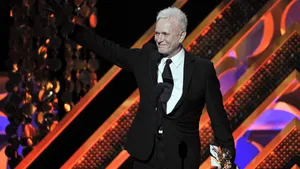







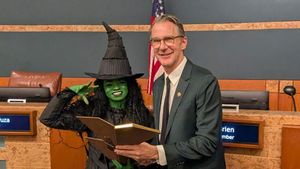







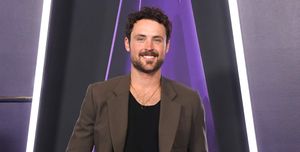

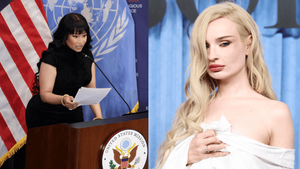











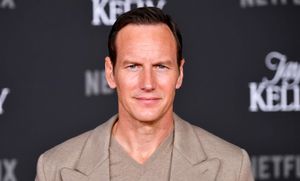








Charlie Kirk DID say stoning gay people was the 'perfect law' — and these other heinous quotes